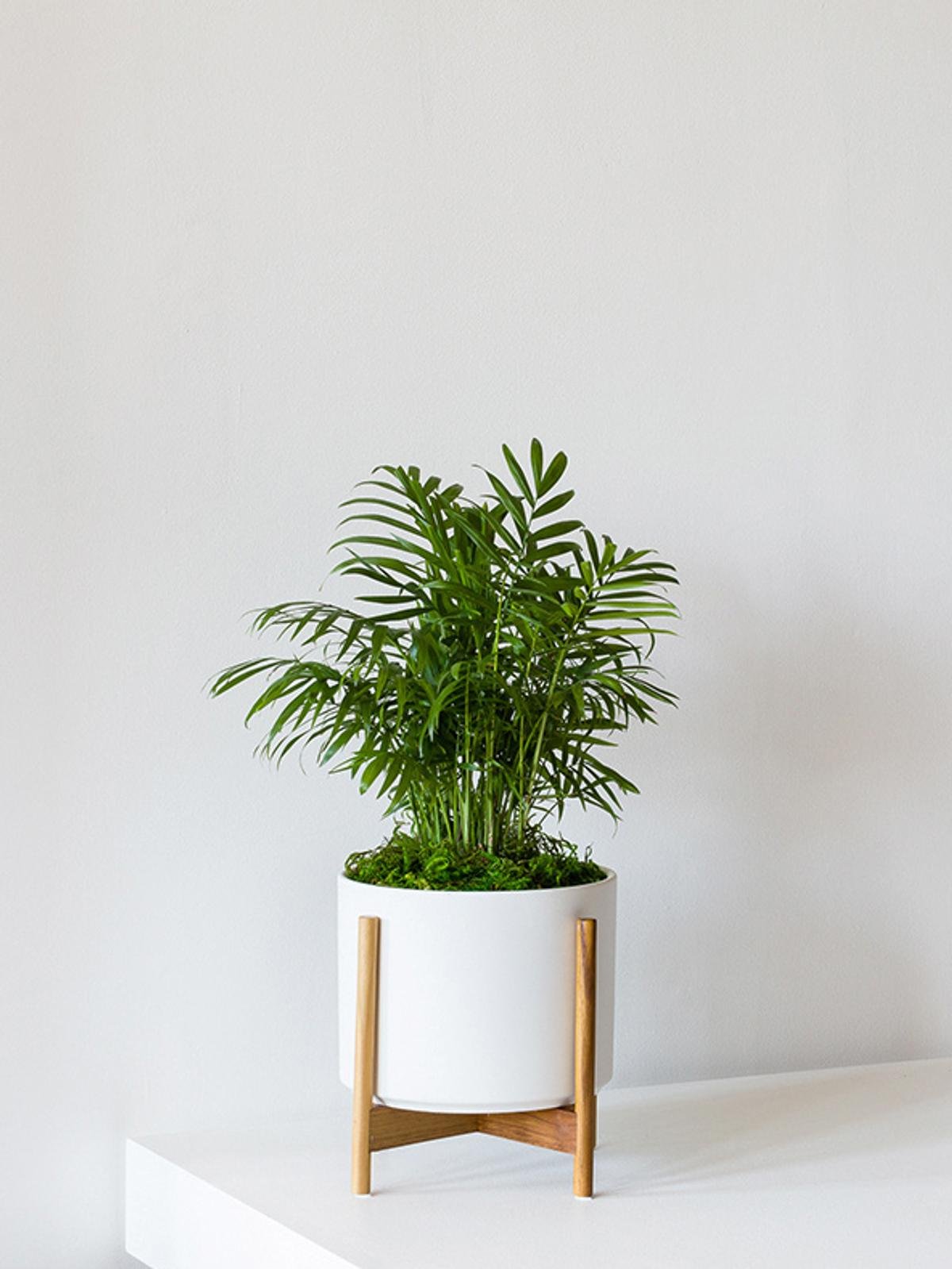How to Care For and Grow Your Parlor Palm
The Parlor Palm
AKA chamaedora elegans
AKA neanthe bella palm
An attractive and popular indoor plant, the Parlor Palm is an easy addition to any space. Its bright green foliage grows in clusters, giving it a lush, tropical feel. Read on for simple tips on how to care for a Parlor Palm indoor plant. This plant is also sometimes called the neanthe bella palm or by its botanical name chamaedora elegans.
What type of light does the Parlor Palm need?
The Parlor Palm enjoys bright indirect light, but can also easily adjust to medium and even low levels of light. Avoid direct sunlight that may burn your plant’s leaves.
How to water your Parlor palm
Water about once a week (or more often if environment is very warm) to keep soil evenly moist but never soggy. Mist between waterings to provide humidity
How fast does the Parlor Palm grow?
The Parlor Palm is a slow grower and can reach up to one to two feet in height. Fertilize your Parlor Palm 1-2 times per month in the spring and summer with indoor plant food, or foliar feed year round.
Potion Magique
An all-natural elixir to add to your misting routine, providing extra nutrition and pest control for your plants.
$28
Common problems with the Parlor Palm
Brown or yellow leaves - underwatering or overwatering
Symptom - brown leaves that wilt or dry out
Cause - usually underwatering, or too dry of environment. However, if you water this plant excessively (allowing it to become soggy or waterlogged), this could also be the cause
Remedy - If underwatered, remove the plant from its decorative pot and give a good shower in the sink. Regularly mist to increase moisture levels. If overwatered, aerate the soil, or simply hold off until the plant dries out a bit until the next watering. If it is very damaged, you may need to repot.
Brown tips - underwatering or over-fertilization
Symptom - dried out, brown tips
Cause - underwatered or too much fertilizer
Remedy - Thoroughly water your plant by removing it from its decorative pot and watering in the sink. Alternatively, only fertilize once or twice in the spring/summer, and make sure to use a diluted dose.
How to maintain a beautiful and healthy Parlor Palm
Take care of your Parlor Palm and it will take care of you! Below are simple tips to continue caring for and growing your Parlor Palm over time.
Pruning - remove old, unattractive or damaged leaves from the base of the plant with a clean blade, ideally during the dormant period.
Trimming - if there is just a small portion of a leaf that was damaged such as the edges or tips, trim off any discoloration or blemishes by following the natural lines and shape of the leaf.
Cleaning - regularly mist the Parlor Palm to keep it clean. If it is very dusty, you may want to use a damp cloth to wipe the leaves clean.
How to grow and repot the Parlor Palm
Growing - Parlor Palms are slow growers and will grow even slower in low light conditions. During spring or summer, use a diluted fertilizer just once or twice to give your plant a vitamin boost.
Repotting - L&G Parlor Palms come in 4” or 6” grow pots and only need to be repotted every few years and only if the plant is unhappy (i.e. has been overwatered) or to refresh the soil and give it new nutrients. If you’d like your plant to grow larger, find a new grow pot that is 2” larger than its current pot. If you’re happy with the current size, you can reuse the same pot and simply change the soil.
Getting your hands dirty with or without a yard - spread out newspaper on the floor, remove the plant from the pot and shake off as much of the old soil as possible so that you have clean roots. Be gentle— Parlor Palms have very delicate roots! At the bottom of the grow pot, and a layer of soil, then place the plant in the center of the pot and cover with new soil. Pat down firmly and water thoroughly. Place the plant in an area with bright indirect light. Your plant will take 2-4 weeks to settle from the shock and adjust to its new home.
How to propagate the Parlor Palm
The only way to propagate a Parlor Palm is by germinating the seeds. However, this is incredibly difficult to achieve indoors, and unfortunately, propagating is best left to growers.
PARLOR PALM
A compact palm with bright green foliage and jungle vibes.



